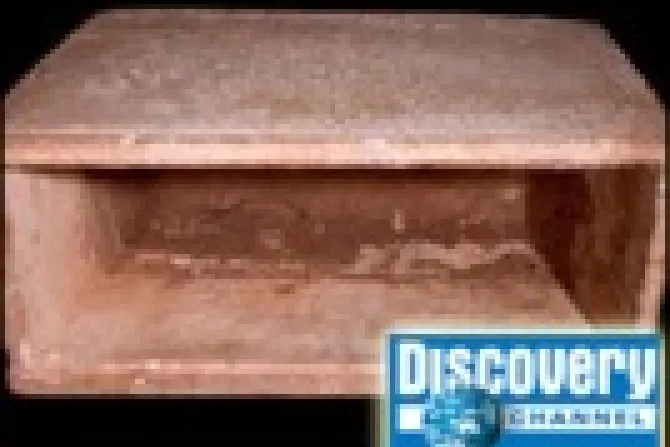Abuja, Nigeria, Apr 13, 2007 / 09:03 am
Several prominent scholars, who were featured in interviews in the controversial documentary Lost Tomb of Jesus, have now revised their statements, reported The Jerusalem Post.
The film argues that 10 ancient ossuaries discovered in southeastern residential Jerusalem neighborhood of Talpiot in 1980 contained the bones of Jesus and his family. The filmmakers attempted to explain some of the inscriptions on the ossuaries by suggesting that Jesus was married to Mary Magdalene, and that the couple had a son, named Judah.
The most astounding revision is that of University of Toronto statistician Andrey Feuerverger, who provided statements that supported the central point of the film.
Feuerverger stated in the film that the odds are 600 to one in favor of the tomb being the family burial cave of Jesus of Nazareth. He now says these figures referred to the probability of a cluster of such names appearing together.
According to The Jerusalem Post, this conclusion has now been changed on the Discovery Channel website to read: "It is unlikely that an equally surprising cluster of names would have arisen by chance under purely random sampling."
The scholars’ revised statements are recorded in the 16-page paper titled "Cracks in the Foundation: How the Lost Tomb of Jesus story is losing its scholarly support". It was compiled by epigrapher Stephen Pfann of the University of the Holy Land in Jerusalem.
The paper was released two months after the documentary, made by Oscar-winning director James Cameron and Emmy-winning Canadian filmmaker Simcha Jacobovici, was broadcast on the Discovery Channel at the beginning of Lent.
Israeli archeologists did say, at the time that the documentary was released, that the similarity of the names found inscribed on the ossuaries in the cave to the members of Jesus's family was coincidental, since many of those names were commonplace in the first century CE.
Shimon Gibson, who was on the team that excavated the tomb and also appeared in the film, is quoted in Pfann's report as saying that much more evidence is needed before the tomb can be considered the family tomb of Jesus.
"Personally, I'm skeptical that this is the tomb of Jesus and I made this point very clear to the filmmakers," Gibson is quoted as saying.
In the film, renowned epigrapher Frank Moore Cross, professor emeritus of Hebrew and oriental languages at Harvard University, is shown reading one of the ossuaries and stating that he has "no real doubt" that it reads "Jesus son of Joseph."
But Cross told Pfann in e-mail that he was skeptical about the film's claims because of the ubiquity of Biblical names in that period in Jerusalem.
"It has been reckoned that 25 percent of feminine names in this period were Maria/Miriam, etc. - that is, variants of 'Mary.' So the cited statistics are unpersuasive," Cross is quoted as saying.
Pfann’s paper also includes statements from DNA scientist Dr. Carney Matheson, who supervised the DNA tests carried out for the film from the supposed Jesus and Mary Magdalene ossuaries.
In the documentary, Matheson said: "These two individuals, if they were unrelated, would most likely be husband and wife." He later said: "The only conclusions we made were that these two sets were not maternally related. To me, it sounds like absolutely nothing."
Francois Bovon is a specialist in ancient apocryphal text who said in the film that the ossuary inscription "Mariamne" is the same woman known as Mary Magdalene. Pfann says Bovon later issued a disclaimer stating he did not believe that "Mariamne" stood for Mary Magdalene at all.


